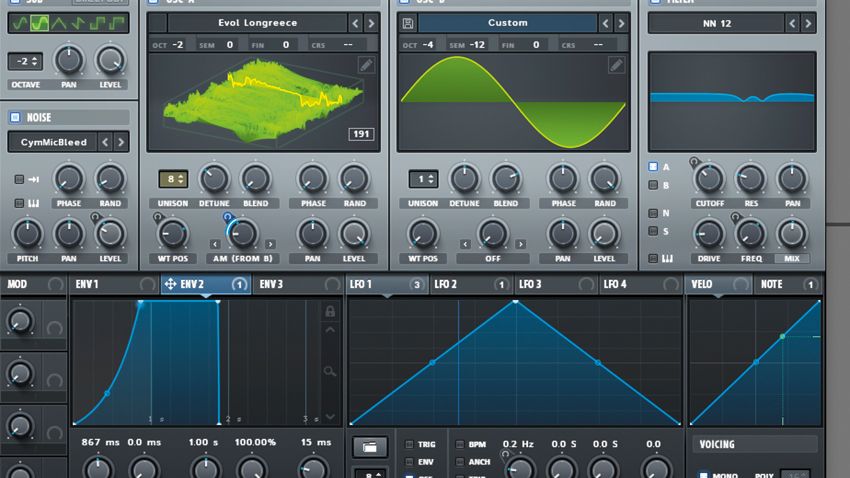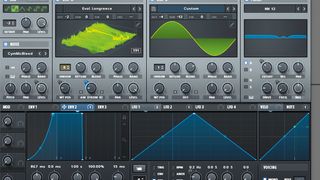How to create a tearing neurofunk DnB Reese sound in Xfer Records Serum
Modern synths such as Xfer Serum make it easy to synthesise complex growls and morphing timbres in the style of Noisia…

Xfer Records' Serum is without doubt one of the most powerful, sonically impressive soft synths to date, thanks to its versatile wavetable architecture, stunning filter, wild modulation and knock-out effects.
The ability to modulate wavetable position and Warp make Serum a monster synth for drum ’n’ bass, with an incredible amount of moment-to-moment variation brought to bear via only the most rudimentary of parameter tweaks.
In this tutorial, we'll walk you through the programming of a Reese-style patch fit to get heads nodding.
For more power synth tutorials, pick up the May edition of Future Music.

Step 1: Call up Xfer Records Serum, load the Bs Reese Evolve preset, then trigger the synth by playing notes on your MIDI keyboard. This thick, evolving Reese bass sounds complex but is actually pretty straightforward in programming terms. Let’s delve deeper into the patch…

Step 2: The synth’s Mono and Legato are on, and Portamento is at around 12 o’clock, giving us a bending, gliding effect. The patch’s core movement is created via LFO 1’s slow, unsync’d modulation of Osc A’s WT Pos knob, which is scanning through Osc A’s gnarly wavetable.

Step 3: Old-school DnB ‘wobble’ basses often have a distinctive change in speed when played up and down the keyboard. To replicate this, Osc B (a sine) is modulating Osc A’s amplitude via Osc A’s Warp mode, set to AM (from B). A slow-attack envelope increases this Warp amount over the course of each note.
Get the MusicRadar Newsletter
Want all the hottest music and gear news, reviews, deals, features and more, direct to your inbox? Sign up here.

Step 4: Head over to Serum’s FX tab, and you’ll see that the insert effects we’ve dialled in are huge contributors to the bass’s aggression and character. Heavy compression is placed after reverb, causing it to swell out between notes. There’s also forceful distortion, careful EQ and widening going on.

Step 5: Back to the Osc panel. For fizz, Serum’s Noise oscillator is pushing additional high-frequency noise into the final distortion stage; and the sub oscillator is adding solid low-end to the overall sound. Finally, note the filter: we’re modulating a double notch type for even more sweeping motion.

Step 6: LFO 1’s Mode is set to Off, so our wavetable modulation is constantly evolving. This means that each bass note has different modulation. Therefore, for more consistency, it’s a good idea to print a good few minutes of a programmed riff as audio, then chop out the very best takes.
Future Music is the number one magazine for today's producers. Packed with technique and technology we'll help you make great new music. All-access artist interviews, in-depth gear reviews, essential production tutorials and much more. Every marvellous monthly edition features reliable reviews of the latest and greatest hardware and software technology and techniques, unparalleled advice, in-depth interviews, sensational free samples and so much more to improve the experience and outcome of your music-making.

"If I wasn't recording albums every month, multiple albums, and I wasn't playing on everyone's songs, I wouldn't need any of this”: Travis Barker reveals his production tricks and gear in a new studio tour

“My management and agent have always tried to cover my back on the road”: Neil Young just axed premium gig tickets following advice from The Cure’s Robert Smith











